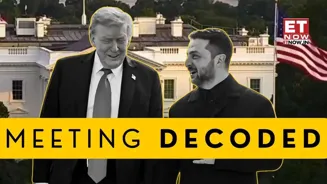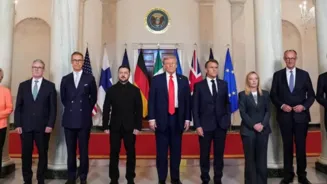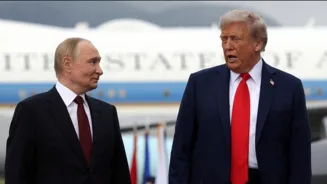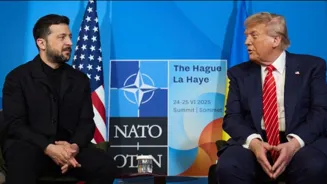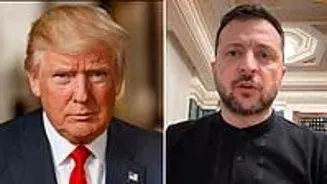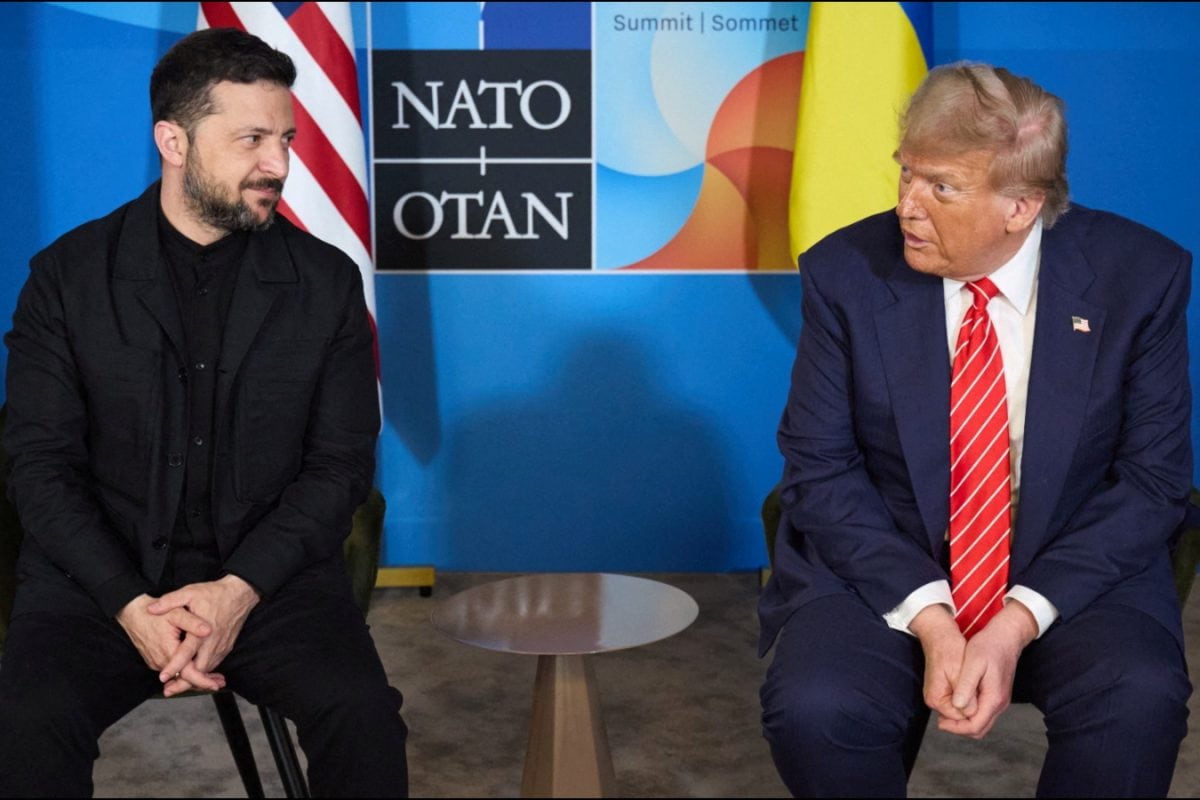The highly anticipated meeting between US President Donald Trump and Ukrainian President Volodymyr Zelenskyy has been analyzed from every political angle
but beyond the statements and headlines, the real story often sits in the pauses, gestures and subtle non-verbal exchanges. Body language can reveal what leaders don’t or rather won’t say out loud. Ukrainian president Volodymyr Zelensky came in for this meeting with President Trump at the Oval Office in Washington wearing an all black suit, but no tie, months after he was abased for his lack of a formal attire during his previous, and now infamous, visit to the White House in February 2025. After watching the encounter closely. Here’s what the posture, expressions, and physical interactions between the two men suggest about their rapport, their strategies, and their underlying intentions.
A Stiff Handshake and Uneasy Smiles
Like every other political summit, this meeting began with the handshake, and in Trump’s case, it has always been more than just a greeting, it’s an opening move. His palm-up, direct-eye-contact style was on display again. It’s a signature Trump gesture, projecting dominance but also a certain performative hospitality. Zelenskyy responded in kind, keeping his expression neutral and his body composed.
Zelenskyy leaned slightly forward, signaling both respect and a plea for recognition. Their smiles didn’t quite meet their eyes. Trump’s grin looked calculated, while Zelenskyy’s expression carried restraint, although suggesting no visible discomfort.
Overall Zelenskyy’s body language throughout the exchange was remarkably restrained. Apart from a slight head movement when Russia was mentioned, he showed little overt reaction. For a man leading a country at war, this restraint conveys resilience, but also a tactical neutrality. Repeatedly, he expressed gratitude—verbally and through softened facial expressions. Gratitude can be both a genuine emotional display and a diplomatic signal.
One noticeable departure from Trump’s past behavior was his gaze. In earlier press events, he often directed answers primarily at reporters, sidelining the leader seated beside him. This time, he consciously directed more eye contact toward Zelenskyy. Unlike the previous meeting, this signaled that Trump was, at least in this moment, positioning Zelenskyy as a central player rather than a supporting actor in a broader geopolitical drama.
Gratitude or Massaging Trump’s ego
After the remarkably combative Oval Office meeting in February 2025, where both President Donald Trump and Vice President JD Vance told Ukrainian President Volodymyr Zelensky that he was insufficiently thankful. Ukrainian president Volodymyr Zelensky thanked Trump 8 TIMES, with mentions of Melania's letter to Russian President Vladimir Putin and other US leaders.
World leaders have discovered that flattery is the fastest way to get on President Donald Trump’s good side in his second term. From praising his golf game to nominating him for a Nobel Peace Prize and even calling him “daddy”, politicians increasingly appeal to his ego to secure favors, avoid tariffs, or sway US influence in conflicts. NATO’s Mark Rutte even defended the "daddy" remark, highlighting how personal praise now shapes Trump’s foreign relationships, including with Ukraine and Russia.
Trump in Command of the Space
Trump remained consistent in his verbal style- deflecting trick questions, avoiding definitive commitments, and leaning into vague but optimistic promises. From a body language perspective, his delivery was steady. No sudden defensive gestures, no tightening jawline, no rapid blinking just deliberate control.
By answering questions himself—sometimes on behalf of Zelenskyy—Trump positioned himself as the protector of the conversation, steering it away from traps that might put his counterpart on the spot. It could be a way of signaling alliance while retaining dominance.
Gestures That Reveal Priorities
Unlike in past appearances, Zelenskyy’s face remained calm with fleeting signs of emotion- tiny lifts of the eyebrows, slight mouth tension—when sensitive topics arose, particularly regarding US support. Still, he avoided more pronounced reactions.
Using Humor to Shift Awkwardness
One of the more striking moments was the lighthearted exchange over Zelenskyy’s jacket. Trump leaned into humor, diffusing what could have been a heavy atmosphere with a quip. Zelenskyy allowed the levity, smiling without overindulging. Humor in high-stakes diplomacy serves as a release valve. It humanizes the interaction and signals rapport.
To sum up the Trump-Zelenskyy meeting, Trump projected controlled dominance: steering the conversation, managing the press, and reinforcing his role as the dealmaker. Zelenskyy, in turn, projected steady gratitude and restraint: positioning himself as cooperative, focused, and emotionally contained.


